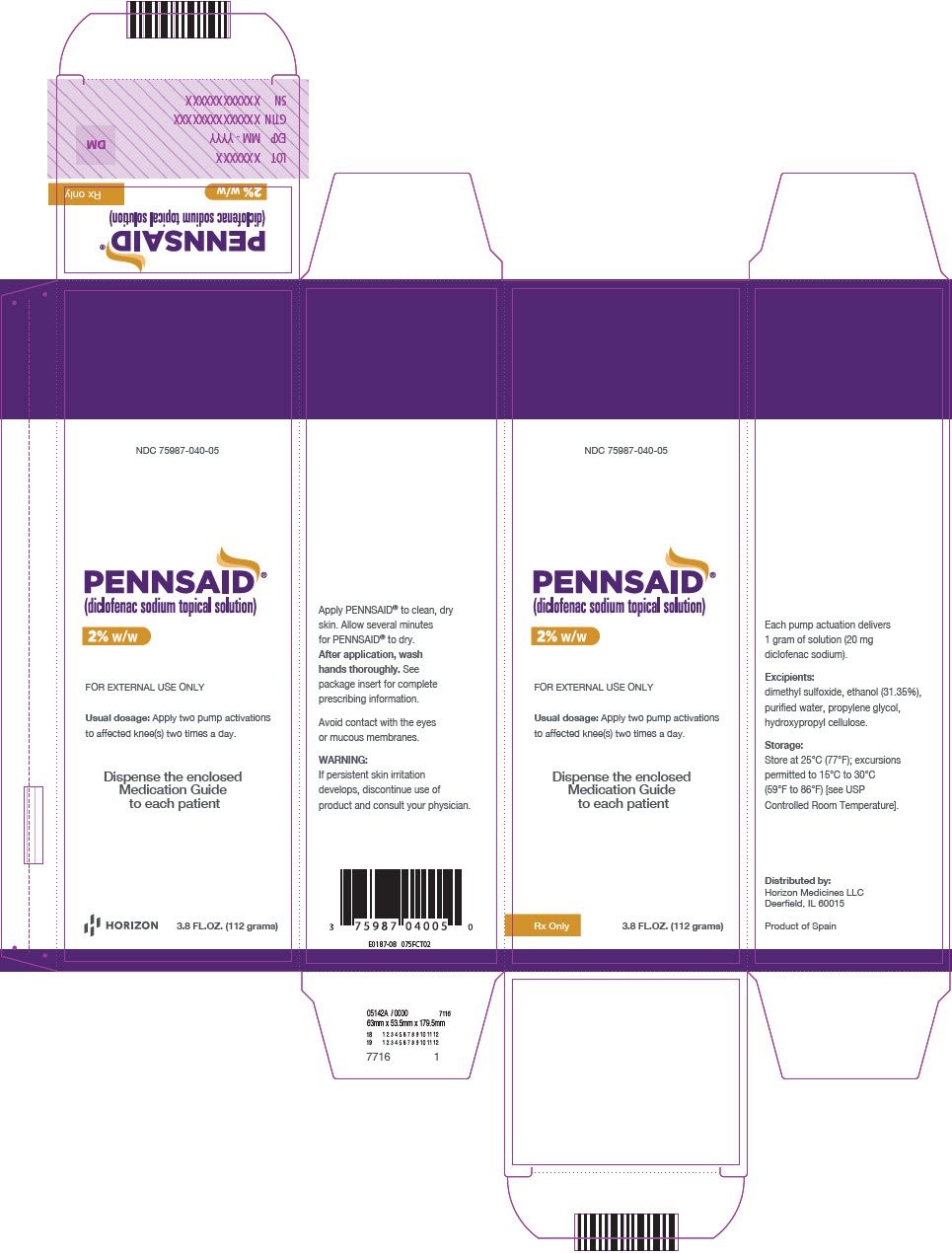
Contents
Pennsaid (diclofenac sodium)
Pennsaid is a topical NSAID used to treat Acute Pain, Arthritis Pain, Actinic Keratosis, and Osteoarthritis. It may be used alone or with other medications.
Pennsaid belongs to the class of Topical Skin Products.
It is not known if Pennsaid is safe and effective in children younger than 6 years.
Side effects of Pennsaid:
RISK OF SERIOUS CARDIOVASCULAR AND GASTROINTESTINAL EVENTS
Cardiovascular Thrombotic Events
- NSAIDs increase the risk of serious cardiovascular events, including myocardial infarction and stroke. This risk may occur early in treatment and may increase with duration of use.
- Pennsaid is contraindicated in the setting of coronary artery bypass graft (CABG) surgery.
Gastrointestinal Bleeding, Ulceration, and Perforation
- NSAIDs increase the risk of serious gastrointestinal adverse events, including bleeding, ulceration, and perforation of the stomach or intestines. These events can occur at any time during use and without warning symptoms. Elderly patients and those with a prior history of peptic ulcer disease and/or GI bleeding are at greater risk.
Serious side effects of Pennsaid include:
- hives, sneezing, runny or stuffy nose, wheezing, trouble breathing, swelling in your face or throat,
- fever, sore throat, burning eyes, skin pain,
- red or purple skin rash with blistering and peeling,
- chest pain spreading to jaw or shoulder, sudden numbness or weakness on one side of the body, slurred speech, shortness of breath,
- first sign of any skin rash (no matter how mild), swelling,
- rapid weight gain, severe headache, blurred vision, pounding in neck or ears,
- little or no urination, nausea, diarrhea, stomach pain (upper right side),
- tiredness, itching,
- dark urine, clay-colored stools, yellowing of the skin or eyes (jaundice), pale skin, unusual tiredness,
- lightheadedness, cold hands and feet,
- bloody or tarry stools, coughing up blood,
- vomit that looks like coffee grounds.
Seek medical help immediately if you experience any of these symptoms.
The most common side effects of Pennsaid include:
- heartburn, gas, stomach pain, nausea, vomiting, diarrhea, constipation,
- headache, dizziness, drowsiness,
- stuffy nose, itching, increased sweating,
- increased blood pressure, and
- skin redness, itching, dryness, scaling, or peeling where the medicine was applied.
If you have any bothersome side effects, speak to your doctor.
This is not a complete list of possible side effects. For more information, ask your doctor or pharmacist.
Contact your doctor for medical advice regarding side effects. Report side effects to FDA at 1-800-FDA-1088.
Dosage for Pennsaid:
General Dosing Instructions
Use the lowest effective dosage for the shortest duration based on individual patient treatment goals.
For relief of osteoarthritis pain in the knee(s), the recommended dose is 40 mg of diclofenac sodium (2 pump actuations) on each painful knee, 2 times a day.
Apply Pennsaid to clean, dry skin.
Before first use, prime the pump by fully depressing it 4 times while holding the bottle upright. Discard this portion to ensure proper priming. No further priming should be required.
After priming, dispense Pennsaid by completely depressing the pump 2 times to achieve the prescribed dosage for one knee. Apply evenly around front, back, and sides of the knee.
Using more or less than the recommended dose is not recommended.
Special Precautions
- Avoid showering/bathing for at least 30 minutes after applying Pennsaid to the treated knee.
- Wash and dry hands after use.
- Do not apply Pennsaid to open wounds.
- Avoid contact with eyes and mucous membranes.
- Do not apply external heat/occlusive dressings to treated knees.
- Avoid wearing clothing over the treated knee(s) until dry.
- Protect treated knee(s) from natural and artificial sunlight.
- Wait for the treated area to dry before applying sunscreen, insect repellant, lotion, moisturizer, cosmetics, or other topical medication to the same knee.
- Avoid skin-to-skin contact between other people and the treated knee(s) until dry.
- Do not use combination therapy with Pennsaid and an oral NSAID unless benefit outweighs risk and conduct periodic laboratory evaluations.
Drug Interactions
See Table 3 for major drug interactions with diclofenac.
Table 3: Major Drug Interactions with Diclofenac
- Diclofenac and anticoagulants such as warfarin have a synergistic effect on bleeding, increasing the risk compared to using either drug alone.
- Concomitant use of drugs that interfere with serotonin reuptake and an NSAID may increase the risk of bleeding more than an NSAID alone.
Pennsaid is not a substitute for low dose aspirin for cardiovascular protection.
- NSAIDs may diminish the antihypertensive effect of ACE inhibitors, ARBs, or beta-blockers.
- In patients who are elderly, volume-depleted, or have renal impairment, co-administration of an NSAID with ACE inhibitors or ARBs may result in deterioration of renal function.
- During concomitant use of Pennsaid and ACE inhibitors or ARBs, monitor blood pressure and signs of worsening renal function.
- When these drugs are administered together, ensure adequate hydration and assess renal function.
Combining Pennsaid with an oral NSAID resulted in a higher rate of rectal hemorrhage, abnormal creatinine, urea, and hemoglobin.
Do not use combination therapy with Pennsaid and an oral NSAID unless benefit outweighs risk and conduct periodic laboratory evaluations.
Avoid short elimination half-life NSAIDs before, the day of, and two days following administration of pemetrexed.
Pregnancy and Breastfeeding
- Use of NSAIDs, including Pennsaid, in the third trimester increases the risk of premature closure of the fetal ductus arteriosus.
- Avoid use of NSAIDs, including Pennsaid, in pregnant women starting at 30 weeks of gestation.
- No adequate and well-controlled studies have been conducted in pregnant women.
- Diclofenac may be present in human milk.
- Consider the benefits of breastfeeding along with the mother’s clinical need for Pennsaid and any potential adverse effects on the breastfed infant.
Summary
Pennsaid is a topical NSAID used to treat Acute Pain, Arthritis Pain, Actinic Keratosis, and Osteoarthritis. Serious side effects include risk of serious cardiovascular and gastrointestinal events, which can be fatal.


